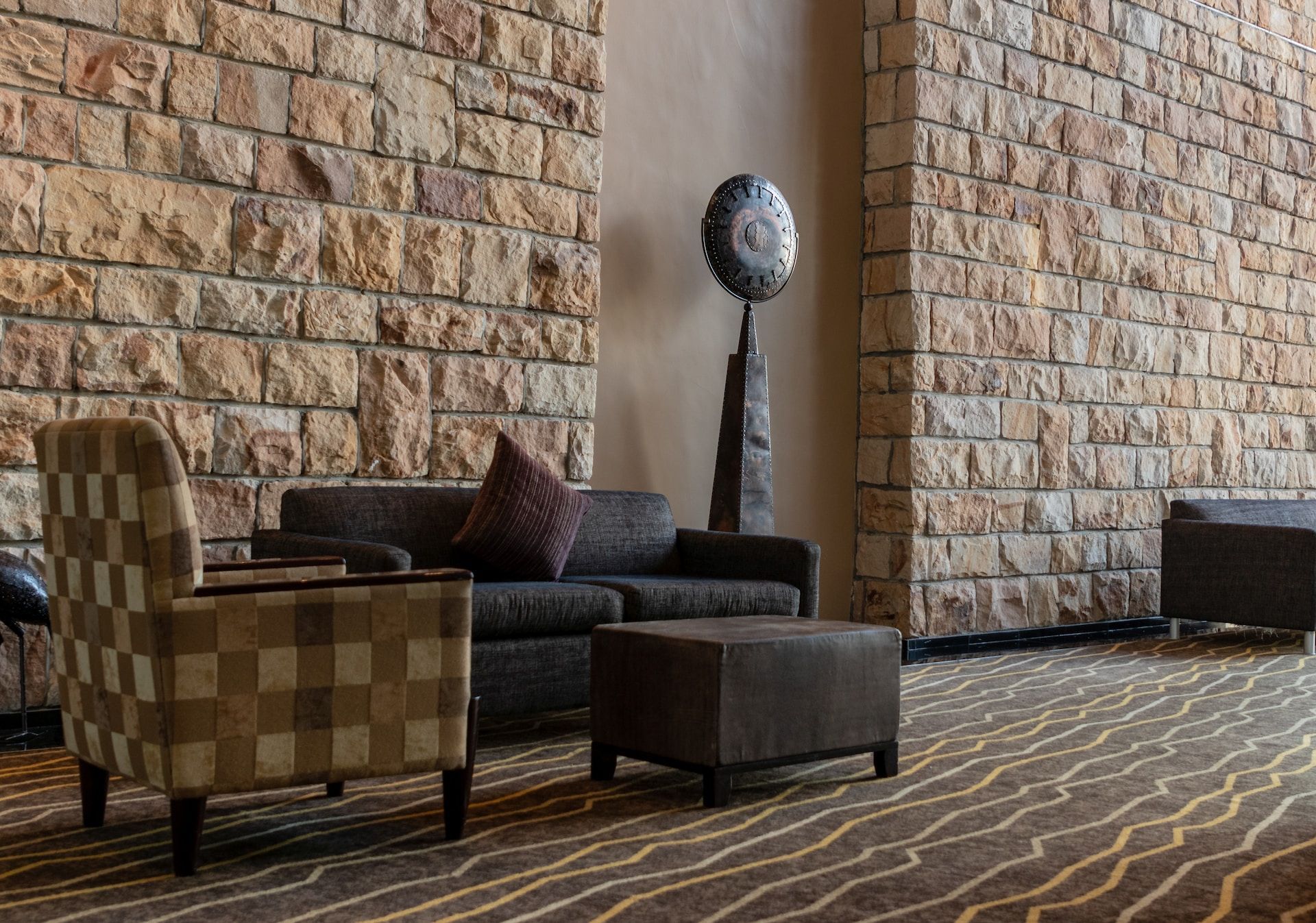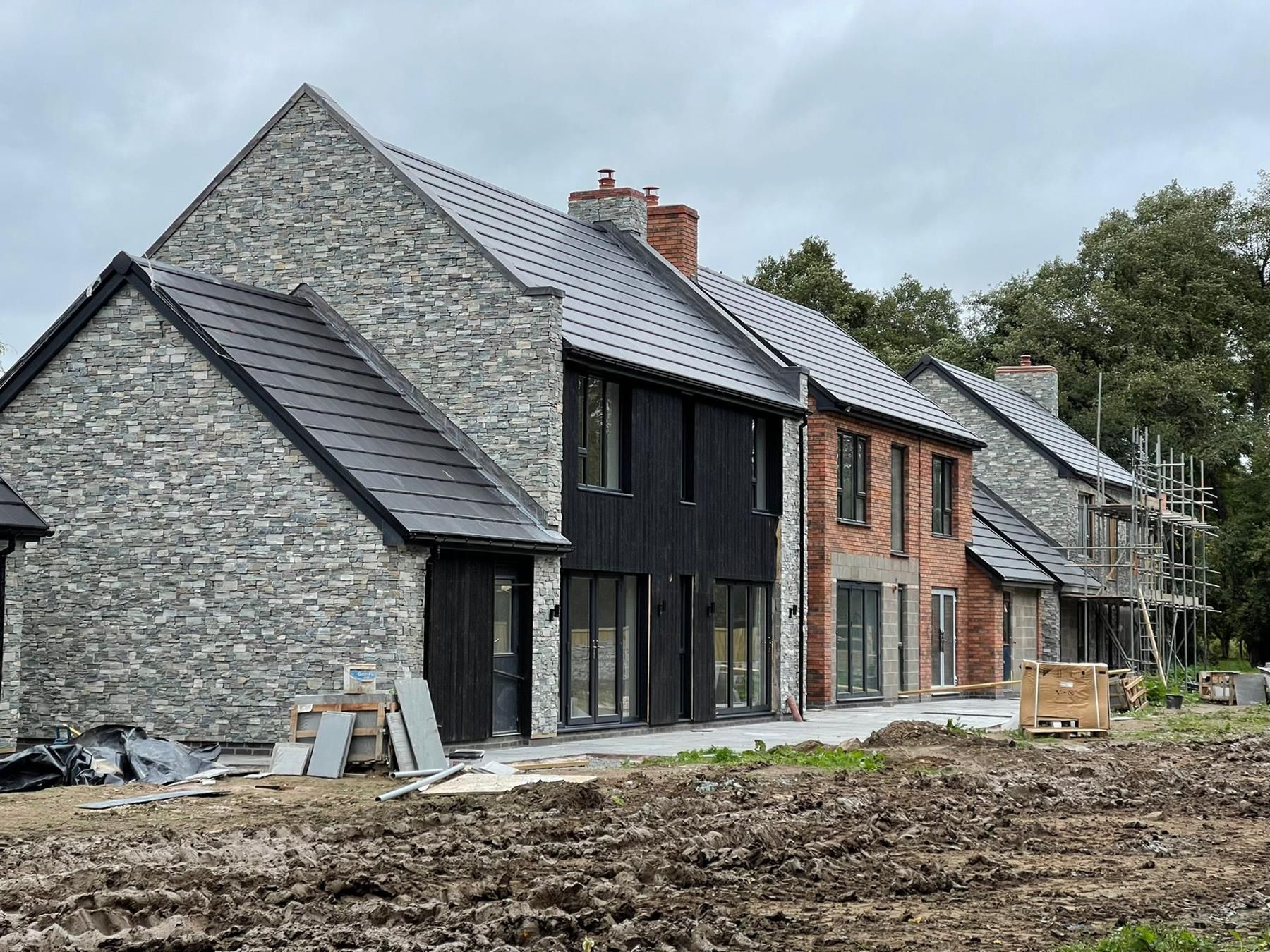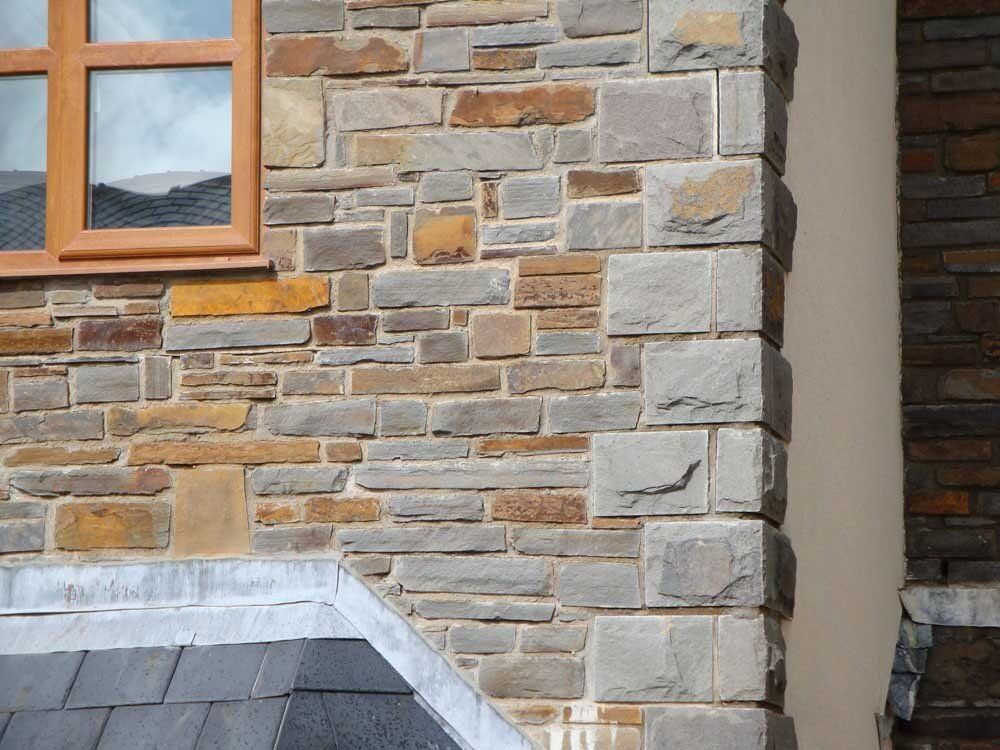Rainscreen Cladding
Rainscreen facade solutions for commercial and residential applications have become increasingly popular in recent years. Our systems offer a multitude of benefits, affording you the opportunity to stay ahead of the competition when it comes to designing and completing buildings. We provide numerous materials that can be incorporated into these systems.
RAINSCREEN CLADDING BENEFITS AT A GLANCE
There are many advantages of rain screen cladding systems, and they include:
01
Cost efficiency
costs vary based on cladding material and support system; the only cost-effective choice in design & construction of high-rise buildings
02
Safety
most systems do not feature adhesives - cladding elements are 'hung' on support brackets or purpose-made profiles using metal fixings
03
Versatility
variety of cladding materials available such as natural stone, brick, concrete, fibre cement, metal, composite boards, and more
04
Energy efficiency
adjustable brackets with stand-off distance up to 300mm allow for thick layers of external insulation
05
Ease of installation
majority of systems are designed for much easier and quicker installation than building full-thickness stone or brick walls
06
Low weight
substantially lighter than walling solutions, some lightweight systems start from about 25 kg per sqm area including subframe
07
Fire safety
most systems and cladding materials will be classed in A1 or A2 fire rating - especially when mineral or rockwool is used as insulating material
08
Visual appeal
some material choices inescapably result in grand façade, for example, natural stones, real clay brick or fibre cement decorative boards
Rainscreen Cladding Systems
We offer the following systems in stone, brick and fibre cement
Stone Rainscreen Systems
We offer rainscreen support systems which comprise of aluminium and stainless steel consoles, profiles, and brackets from Sistema Masa and Ejot Crossfix specially designed for stone cladding. As cladding material, we offer natural sandstone or limestone cladding panels machined to suit various systems on offer.
Brick Rainscreen Systems
Lightweight rain screen façades in brick are rapidly gaining in popularity. We offer a number of systems: classic solutions that have been used for decades for stone are now used for brick too - R|BRICK - Brick Façade System. Other systems use fibre cement backing board - we offer T|BRICK tracking system and F|BRICK fully-assembled brick panels. Both systems fixed to vertical battens create a brick façade.
Fibre Cement Rainscreen Systems
We offer fibre cement cladding boards such as Cembrit or Scalamid and all necessary accessories for mounting them on metal or timber frame. We also have in-house facility to cut the boards to size and to special shapes.
What you should know about rainscreen cladding?
What is it?
Rainscreen cladding is a type of external wall system designed to protect buildings from the elements. It consists of an inner layer of insulation, an external layer of waterproofing material, and a cladding material that forms the outer surface. The space between these layers creates a ventilation gap or cavity that allows moisture to escape, while still providing some degree of protection against wind and weather. This type of facade helps to reduce heat loss and keep out dust, dirt, and insects. Additionally, it can be used to create a pleasing aesthetic effect with colors, textures, and patterns. By creating a barrier between the outside environment and interior walls, rain-screen cladding helps to maintain energy efficiency within a building as well as contributing to its overall look.
What are the benefits of rainscreen cladding?
Rainscreen cladding is an increasingly popular choice for exterior wall construction and offers many advantages to building owners. By creating a breathable, protective outer layer, it helps maintain the structural integrity of the building while keeping the interior warm in colder weather and cool in warmer climates. It also helps prevent water penetration and increases the lifespan of the walls. Additionally, it can help reduce energy costs by providing greater insulation than traditional materials. Furthermore, this type of cladding is low maintenance, durable, and aesthetically pleasing, making it an ideal choice for any project. It is also worth noting, that the majority of these systems leave the cladding material without any joint, and in many cases, maintenance teams can remove damaged units and replace them. - With its many benefits, ventilated rain-screen is becoming an increasingly popular option for architects, builders, and homeowners alike.
Types of Rainscreen Cladding
Rainscreen cladding is a type of construction material used on the exterior of buildings to protect them from the elements, such as rain and wind. It is installed in a way that creates an air gap between the outer layer and the inner walls, allowing water and moisture to escape without damaging the structure. There are several types available on the market, including metal, stone veneer, plastic composite boards, fiber cement boards, and brick slips. Metal sheets are often used due to their durability and resistance to corrosion. Stone veneer is a popular choice for its natural look and ability to resist heat. Plastic composite boards are lightweight yet strong enough for structural use while fiber cement boards offer fire resistance and good insulating properties. Brick slips provide a classic aesthetic with an added layer of protection against weather damage. A rainscreen cladding system is an important part of any building’s exterior, providing weatherproofing as well as aesthetic appeal.
Most common types of rain-screen cladding
Rainscreen cladding is a type of construction material used on the exterior of buildings to protect them from the elements, such as rain and wind. It is installed in a way that creates an air gap between the outer layer and the inner walls, allowing water and moisture to escape without damaging the structure. There are several types available on the market, including metal, stone veneer, plastic composite boards, fiber cement boards, and brick slips. Metal sheets are often used due to their durability and resistance to corrosion. Stone veneer is a popular choice for its natural look and ability to resist heat. Plastic composite boards are lightweight yet strong enough for structural use while fiber cement boards offer fire resistance and good insulating properties. Brick slips provide a classic aesthetic with an added layer of protection against weather damage. A rainscreen cladding system is an important part of any building’s exterior, providing weatherproofing as well as aesthetic appeal.
Aluminium or metal panels
Aluminium is known for their longevity, lightweight, and low maintenance, making it a great choice for exterior cladding. It is are available in a variety of colours, thicknesses, and finishes, so you can easily find an option to suit your needs. Metal offers a more traditional appearance, with plenty of unique textures to choose from. They provide excellent protection against the elements and come in various sizes and shapes to fit any building design. Both types of cladding can add a touch of style to your property while providing reliable protection from rain and other weather conditions.
Timber
Wood cladding is often seen as a traditional, classic choice for many types of buildings. This type of cladding is made from wood boards, planks, or panels that are fitted together to form a protective outer barrier on the building. It provides excellent protection against the elements, such as wind and rain, while also creating an aesthetically pleasing façade. Wood cladding is available in various finishes to suit different tastes and budgets. It can be stained or painted to match existing colors and styles or left natural for a more rustic look. Wood cladding is a great way to add character and value to any building without breaking the bank.
Stone
Stone is a popular choice for cladding due to its robustness, aesthetic appeal, and ability to withstand harsh weather conditions. Natural stones such as sandstone, limestone, slate, granite, and marble can be used in the form of slabs or tiles, while manufactured stones such as reconstituted limestone and sandstone offer a more cost-effective alternative. A stone facade can be achieved using various methods such as adhesive bonding, mechanical fixing, or mortar pointing. The material provides excellent water resistance when installed correctly and helps protect the building’s structure from moisture ingress. Stone also improves the thermal performance of the building by providing additional insulation and reducing heat loss.
Composite panels
Composite panels are made from a mixture of two or more materials, such as aluminum and plastic. This provides excellent insulation and protection from the elements. Metal panels are usually made from aluminum and provide similar benefits, but with more longevity due to their metal composition. Both types of cladding offer superior performance in terms of water resistance, sound insulation, and fire resistance. They also require minimal maintenance and can last for many years when properly maintained.
Fiber-cement cladding
Fiber-cement cladding is a popular choice as it provides superior weather protection without compromising on aesthetic appeal. The panels are easy to install and require minimal maintenance over time. They are also less expensive than other types of cladding. Furthermore, fiber-cement siding offers excellent fire resistance and durability, making it an ideal choice for many applications. It can also be painted in any color to match the overall design scheme of the building structure.
Brick cladding systems
Rainscreen cladding systems are an important part of modern building construction. Brick cladding is an effective way to protect a building from weather-related damage and provide aesthetic appeal. Brick cladding is available in a variety of colors and textures and can be installed quickly and easily. It also provides superior moisture protection, as it can repel rainwater and prevent it from entering the interior spaces. Brick cladding systems are also highly durable and can withstand extreme temperatures, making them ideal for use in buildings located in areas with harsh climates.
Cost considerations when specifying rainscreen facade
Cost considerations are an important part of any building project, and this is especially true when it comes to rainscreen facade. This type of cladding can be expensive to install, as it requires specialized materials and labour. Additionally, the design of the cladding must be carefully considered to ensure that it is effective at protecting the building from water damage. Furthermore, the cost of maintenance and repairs over time should also be taken into account. While rainscreen cladding can be expensive initially, its long-term performance may save money in the long run due to reduced maintenance costs and improved energy efficiency. Therefore, it is wise to weigh all these factors when deciding whether or not to invest in rainscreen cladding for a building project.
Conclusion
In conclusion, there are many advantages of rain-screen cladding systems - it is a great way to protect the exterior of a building in order to ensure its longevity for many years to come. It is cost-effective and provides excellent protection from the elements while also providing insulation and soundproofing benefits.
Save Time
Cut Costs
Build Faster
Look Grand
Interested in Rainscreen Cladding?
Call us on 020 4578 0824 or contact us for your free quote.
LATEST ON OUR BLOG
Stone cladding UK suppliers of interior and exterior stone cladding, external stone cladding, sandstone cladding & architectural stone.
Real Stone Cladding is a trading name of Specify Ltd. Company Registered in Scotland
91 Westlaw Place Glenrothes KY6 2RZ Reg. No. SC460581 VAT No. 172 4800 18
Specify Ltd - Stone & Brick Facades:
specify-uk.com | realbrickcladding.co.uk |
for EU sales contact:
Real Stone Cladding - All Rights Reserved | Specify Ltd



